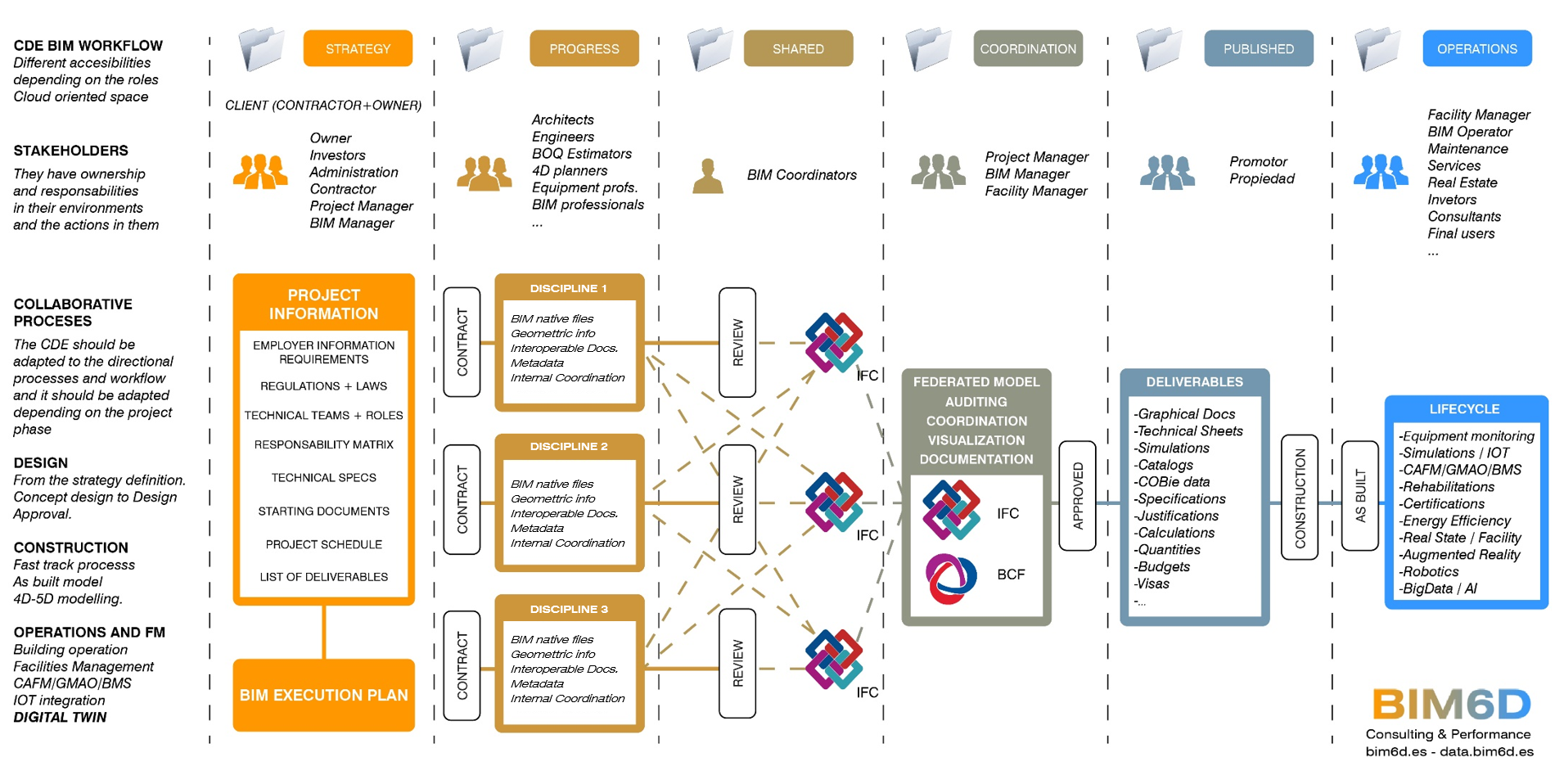From the origin of a project conception until the end of its life cycle, the project must evolve and react through the decision-making of those responsible or leaders together with the information necessary for this evolution. Therefore, it is about managing the project information necessary for its purpose in the best possible way, in a coordinated and directional manner, and the success or failure of the project depends on the efficiency of this evolutionary process.
By using BIM, information is generated more and more abundant, complex and in a faster way, sophisticated technological tools are necessary to manage this information and transmit it efficiently and understandable to the agents involved. BIM is undoubtedly heading towards being a technology in itself with autonomy enough in generating more efficient projects.
We have always used communication tools and systems that facilitate the progress of the project, but since the arrival of BIM, these tools are also evolving and becoming more integrated to become a single structure.
Today we use a multitude of systems that already are common collaborative environments, from a server that manages multiple computers in a local network, e-mail, ftp platforms for exchanging files between offices in different locations, cloud synchronizing platforms, virtualized systems, even the chat program that we have on our mobiles are very powerful tools to exchange information related to a project in a very efficient way. All of them in their evolution are dependent on the internet.
The problem is that all these tools work separately, and once again we have the risk of losing information, not transmitting it correctly to all the necessary ones, duplication of versions and complicating workflows by not simplifying and integrating these tools for everyone involved. In addition, these tools must be part of BIM methodology, they must be able to work with the model as a starting point and, in our opinion, working in bidirectional way from model to external sources of information.
This is why we can define the common data environment as:
A unique virtual place, accessible and operable from the internet, for the management of BIM federated models, the information that BIM generates (graphic and non-graphic), the evolutionary processes of the project, the roles of the agents involved and their communications, in a structured and directional way towards the achievement of the project objectives.
The CDE (Common Data Environment) provides a collaborative environment where teams can share their work and files for the Information Management process. The CDE could consist of more than one system configured to meet the requirements defined in standards like ISO 19650. This document presents the management process within the CDE necessary to facilitate the delivery of the necessary project information. This process is clearly directional from the so-called CAPEX (Capital Expediture) phase that begins by defining the project strategies that will be reflected in the BIM Execution Plan, until the beginning of the OPEX (Operational Expediture) where the Operations and Maintenance phase begins in the use of the building or infrastructure (Active).
The benefits of using a CDE include:
- The property of the information generated (models, graphic and non-graphic documentation) is guaranteed and remains with its creators, even if it is shared and reused, only the one who generates it is authorized to exchange it.
- Shared information reduces the production of coordinated information in time and cost (federated models)
- Any amount and variety of documents and datasets can be generated from the combination of different work models.
Si los procedimientos para compartir información son actualizados de forma continuada, periódica y adecuada por los equipos de diseño, la coordinación espacial del modelo es una ventaja que proporciona el uso del CDE.
If the procedures for sharing information are performed periodically by the involved teams, the spatial coordination of the model is an advantage provided by the use of the CDE.
The information can be used for construction planning (4D), cost estimation (5D), efficiency and sustainability or facility management (6D), among other possible uses. The collaborative flow of information related to the project is developed within the CDE, which evolves at the same time as the phases of the project, from a schematic project, a detailed model for construction, to a model that simulates the use of the project with graphic and not graphic.

Because it is a unique environment where different disciplines, interests and collaborative actions converge, this system must facilitate interoperability between the different software platforms and be based on open standard accessible formats. The standard format recognized in BIM systems that contains the graphic and metadata information necessary to define the project is the IFC (Industry Foundation Classes), a format that today guarantees interoperability between the different commercial platforms that work on BIM.
There are other formats to take into account and study their implementation such as the BCF (Bim Collaboration Format) that provides information on the coordination of federated models for the resolution of conflicts detected in the project review, and the COBie (Construction Operations Building Information Exchange) that defines the project information necessary for proper asset management in the operations and maintenance phase.
The common collaborative environment should:
- Be a unique space to manage a project.
- Be accessible and operable from the internet in an open way.
- Guarantee the correct coordination and distribution of project information.
- Properly store valid and useful project documentation throughout its useful life.
- Allow the visualization and control of the federated model in standard BIM formats.
- Guarantee the ownership and authorship of the models and project information by their creators.
- Serve to justify the delivery of the documentation required by the teams.
- Serve to validate and approve the submitted documentation required by the teams.
- Define the roles, responsibilities and rights of each team and person involved in the project. For this reason, it should contain the BIM Execution Plan as a document that defines the uses and strategies in the development of the project.